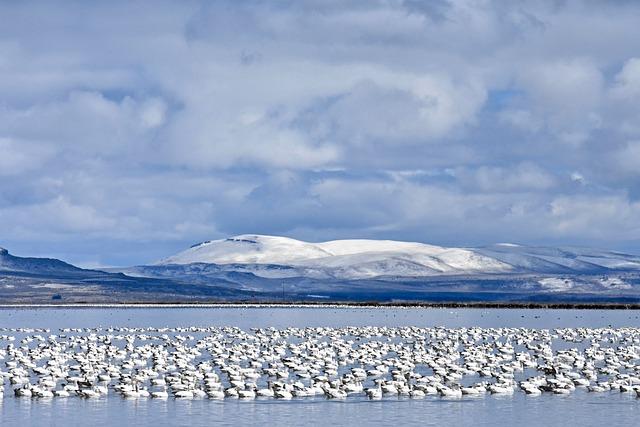Understanding Immigration Trends: Pakistan’s Evolving Landscape
In an increasingly interconnected world, migration has emerged as a defining feature of the 21st century, shaping societies, economies, and cultures across the globe. Pakistan, a nation steeped in rich history and vibrant diversity, finds itself at a pivotal crossroads when it comes to immigration. As the country navigates the complexities of socio-political shifts, economic challenges, and global dynamics, the patterns of migration—both into and out of Pakistan—have begun to evolve in remarkable ways. From a booming expatriate community contributing to remittances that bolster the national economy to the influx of refugees fleeing conflict and instability, the landscape of immigration in Pakistan is both multifaceted and profound. This article seeks to unpack and analyze the current trends in immigration to and from Pakistan, exploring the underlying factors driving these changes and the implications they hold for the country’s future. As we delve into the nuances of this evolving narrative, we invite readers to consider the human stories behind the statistics and the broader societal shifts that mirror the aspirations and challenges of a nation in transition.
Examining Historical Context: Immigration Patterns from Pakistan Over the Decades
Throughout the decades, immigration from Pakistan has been shaped by a blend of socio-political, economic, and environmental factors. In the 1950s and 1960s, many Pakistanis migrated to the UK and the Middle East in search of better employment opportunities, often filling low-skilled jobs that local populations were reluctant to take. This migration wave, largely driven by the aftermath of partition and the need for labor in burgeoning industries, laid the groundwork for the Pakistani diaspora. The influx was characterized by a mix of economic necessity and family reunification, where many early migrants sought to bring family members into their new homes.
As the years progressed, particularly from the 1980s onward, the nature of immigration shifted significantly. Political instability and conflict within the region pushed many to flee, leading to increased asylum-seeking trends. Today, the demographic of Pakistani immigrants is increasingly diverse, with a noticeable rise in highly skilled professionals, particularly in fields such as technology, medicine, and finance. This evolution reflects changing immigration policies worldwide and the global demand for skilled labor, as well as shifting aspirations among the younger Pakistani population. The following table illustrates the significant changes in immigration patterns over recent decades:
| Decade | Primary Destination | Main Reason for Migration |
|---|---|---|
| 1950s-60s | UK, Middle East | Employment Opportunities |
| 1970s-80s | UK, USA | Political Instability |
| 1990s | Canada, Australia | Family Reunification |
| 2000s-Present | Global (Various) | Skilled Labor, Education |

Key Factors Driving Contemporary Migration: Economic, Social, and Political Influences
Migration patterns from Pakistan are significantly influenced by a confluence of economic, social, and political factors. Economically, individuals are driven by the pursuit of better job opportunities and improved living standards, particularly in urban areas where industries are burgeoning. The rise in global labor demand for skilled workers has also incentivized many to seek employment abroad. Additionally, the remittances sent back home by Pakistanis working overseas play a crucial role in bolstering the local economy, creating a cycle that encourages further migration. Key economic drivers include:
- High unemployment rates
- Wage disparities compared to developed countries
- Access to better education and healthcare
Social factors are also paramount in shaping migration trends, including network effects where established communities abroad provide support and information to potential migrants. Social mobility, influenced by educational opportunities and aspirations for a better lifestyle, drives families to migrate for a brighter future. Additionally, political instability and security concerns have historically compelled many to leave their homeland in search of safer environments. Prominent social influences include:
- Family reunification
- Cultural ties and diasporic communities
- Escaping conflict or persecution

Impacts of Immigration on Pakistani Society: Opportunities and Challenges Ahead
The landscape of immigration in Pakistan has shifted dramatically over the past few decades, bringing with it a unique blend of opportunities and challenges. With the global movement of people, Pakistan has become both a source and a destination for migrants, which has resulted in increased cultural diversity. This influx has introduced new ideas, skills, and perspectives that can enrich the local community. The economic contributions of immigrants, particularly in key sectors such as technology, healthcare, and agriculture, have spurred innovation and growth in these areas. This vibrant mix can lead to a more dynamic workforce and can help bridge gaps in labor shortages and skill mismatches within the country.
However, alongside these benefits exist significant challenges that must be addressed to harness the full potential of immigration. Social integration remains a crucial issue, as longstanding cultural differences can lead to tensions between native populations and newcomers. Additionally, there is the strain on public services and infrastructure, which can become overstretched in densely populated urban areas. Policymakers must navigate these complexities to create an environment where all communities can thrive together. Sustainable migration policies that promote inclusivity and mutual respect are essential to ensure that the advantages of immigration do not come at the cost of social cohesion.

Policy Recommendations for a Comprehensive Immigration Framework: Balancing Needs and Rights
To create a comprehensive immigration framework that effectively addresses the shifting dynamics within Pakistan’s landscape, policymakers must prioritize a series of recommendations aimed at balancing the needs of both the state and its citizens. Key priorities should include:
- Establishing clear pathways for legal immigration, thereby reducing undocumented entries.
- Enhancing labor rights and protections for immigrants to ensure their contributions are valued and safeguarded.
- Facilitating community engagement initiatives that foster understanding and support between local populations and immigrant communities.
A transparent and inclusive policy framework will not only satisfy economic objectives but also respect the dignity and rights of individuals moving within and beyond borders. Additionally, integrating data-driven approaches is essential for assessing and adapting immigration policies, ensuring they respond dynamically to economic fluctuations and labor market demands.
Moreover, the government should consider the establishment of a national immigration advisory council to function as a bridge between policymakers, civil society, and affected communities. Such a body would help identify pressing issues and recommend targeted solutions. The potential areas of focus could include:
| Area of Focus | Suggested Action |
|---|---|
| Economic Integration | Develop programs for skills training and job placement. |
| Legal Rights | Strengthen legal assistance programs for immigrants. |
| Cultural Exchange | Promote awareness campaigns about immigrant contributions. |
By implementing these strategies, the framework can serve not only to uphold human rights but also to enhance economic resilience and social cohesion in an evolving demographic landscape.
Closing Remarks
As we draw the curtain on our exploration of immigration trends shaping Pakistan’s evolving landscape, it becomes evident that this dynamic narrative is woven with complexities that reflect the aspirations, challenges, and resilience of its people. The shifting patterns of migration not only highlight the socio-economic factors at play but also echo a larger story of globalization and interconnectivity in an increasingly mobile world.
Understanding these trends requires us to look beyond the numbers and statistics; it invites us to consider the individual journeys of those who venture across borders in search of better opportunities or to escape adversity. As Pakistan continues to navigate its geopolitical context and domestic realities, the implications of these migrations resonate far beyond its borders, influencing cultural exchanges, economic policies, and global perceptions.
the tapestry of immigration in Pakistan is not just about the movement of people—it is about the evolution of identities and the reimagining of futures. As we continue to observe these changes, we must remain committed to fostering a dialogue that not only acknowledges the challenges inherent in immigration but also celebrates the diversity and dynamism it brings to society. The future, as ever, is in motion—awaiting the stories yet to be told.



